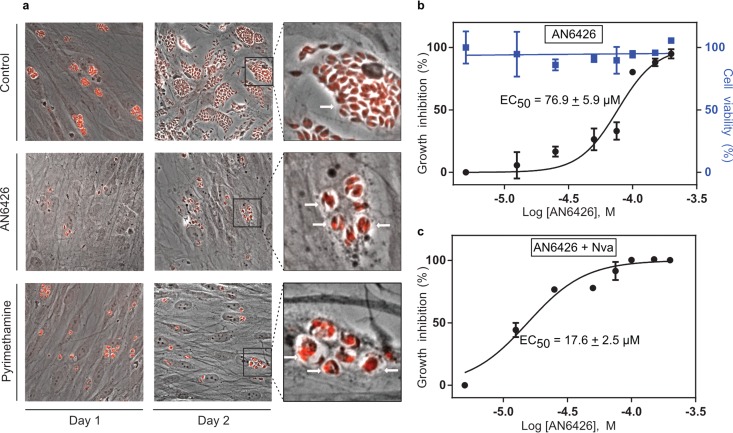FIG 5.
Efficacy of AN6426 against T. gondii in human cells and norvaline effect. (a) Immunofluorescence microscopy experiments monitoring the proliferation of parasites upon infection of human fibroblasts. Parasites were stained with specific antibodies directed against sumoylated parasite proteins (red). Comparison of untreated cells (negative control) at 24 and 48 h postinfection with cells treated with AN6426 (100 μM) or pyrimethamine (2 μM) shows a reduction of the parasite load in human cells. The insets on the right show higher-magnification views of parasitic vacuoles, with untreated cells containing >40 parasites per vacuole and AN6426-treated cells containing 2 to 4 parasites per vacuole (i.e., after 1 or 2 replication cycles). Single representative vacuoles are indicated by arrows. Treatment with AN6426 was carried out for 4 days starting at 8 h postinfection (see Fig. S6 in the supplemental material for more details). (b and c) Dose-response curves showing the activities of AN6426 (b) and AN6426 in the presence of norvaline (Nva) (c) against T. gondii and HFF viability. The dose-response curves were normalized by the ratio of parasites/vacuoles for the untreated cells. EC50s were calculated by fitting the data to a sigmoidal dose-response inhibition model. The data are the means from three independent measurement, and the error bars indicate the standard deviations.

